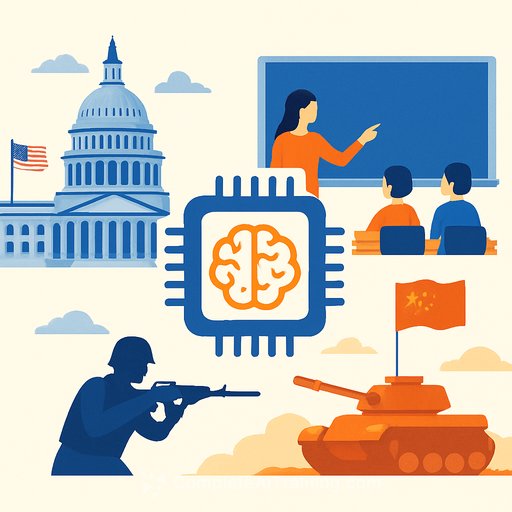Teaching Critical Thinking in the Age of AI
A student once told me they asked an AI to explain binaries because the lecture didn't click. The AI asked follow-up questions, pushed for counterexamples, and helped them make sense of the idea. That response used to worry me. Now it gives me a blueprint.
Higher education has been stuck in a false choice: use AI or ban it. That's the wrong question. The right one is: how do we use AI to build better thinkers?
The Move: Make AI Your Co-Instructor
I teach large, contentious topics: meritocracy, race as a social construct, and generational poverty. With 50-100 students, the usual fixes-long office hours, extra Zooms, detailed feedback-don't scale. AI does.
So I require weekly AI conversations. Each class has a prompt, students chat with the AI, then submit a short reflection with takeaways, sources, and next steps. The shift in clarity, confidence, and depth has been hard to ignore.
Academize Everything
Your job and mine is to strip topics down to claims, evidence, and methods. Remove heat, add structure. That's "academizing"-and AI can help do it on demand if you give it the right constraints.
This isn't outsourcing judgment. It's building a process where students practice neutral analysis, argument testing, and source quality. That's the core of academic freedom and shared inquiry. See the AAUP's statement for the principle behind this move: AAUP: Academic Freedom.
The Weekly System
- Prompt: You provide a focused prompt tied to the week's topic.
- Dialog: Students chat for 15-20 minutes and save the transcript.
- Reflect: They submit a 200-300 word reflection with what changed in their thinking, where their evidence came from, and what they still need to verify.
- Verify: They fact-check one key claim with a credible source.
- Iterate: Next class, they update their claim or thesis based on what held up.
Prompts You Can Copy
- "Explain binary thinking to a first-year student. Ask me 5 one-at-a-time questions that push nuance. After each answer, request an exception that weakens my claim."
- "Take the stance that meritocracy is a myth. Give the 3 strongest arguments and the 3 strongest rebuttals. After each, ask me what evidence I'd accept as disconfirming."
- "Define 'social construct' with two concrete examples (e.g., race, money). Offer 2 counterexamples and explain why they fail."
- "Tutor me on generational poverty in 15 minutes using Socratic questions. Require me to cite one peer-reviewed source and paste the citation."
- "Identify assumptions in this paragraph. Stress-test each with a counterfactual and a historical case."
- "Act as an academizer: neutral tone, reduce the topic to claims, evidence, methods. Flag any logical fallacies and missing data."
- "Before I draft, co-create a thesis with me. I'll propose one; you'll propose two alternatives. Help me choose using clarity, scope, and falsifiability."
Guardrails That Keep Rigor Intact
- Disclosure: Students paste a short transcript snippet with their reflection.
- Source quality: Require at least one credible source per reflection; no bare URLs; use citation style.
- Bias audit: Have AI list unstated assumptions in the student's claim. Students respond to at least one.
- Privacy: No sensitive personal data in prompts. Use anonymized scenarios.
- Use limits: AI for brainstorming, outlining, counterarguments, clarity, and practice questions; no full-draft generation.
- Grading: Weight process (dialog evidence), reasoning depth, and source quality more than polish.
- Access: Ensure a lab or campus device option so every student can participate.
What Students Notice
They report clearer thinking and fewer knee-jerk takes. They also say the AI pushes them past "sounds right" by asking what would change their mind. The tone is patient, the pacing is adaptive, and the feedback is instant.
90-Minute Rollout Plan
- Pick one topic this week.
- Adopt one prompt from above; post it with a short policy on acceptable AI use.
- In class: 20-minute AI dialog, 10-minute pair share, 15-minute mini-lecture addressing patterns you saw.
- Assign a 250-word reflection + 1 verified source. Due in 48 hours.
- Next class: 10-minute debrief; collect top misconceptions; adjust the next prompt.
What Changes for You
You spend less time re-explaining definitions and more time coaching judgment. The AI handles first-pass questions and counterexamples. You focus on gaps, nuance, and synthesis.
Keep Building Your Prompt Playbook
If you want ready-to-use prompts, templates, and course-friendly workflows, this catalog is a solid starting point: Prompt Engineering Resources.
The Bottom Line
The ban-or-embrace debate is stale. Put AI to work as a tireless, neutral partner that asks better questions than most students ask themselves. Teach the process, set the guardrails, and let the practice build thinkers.
Your membership also unlocks:






